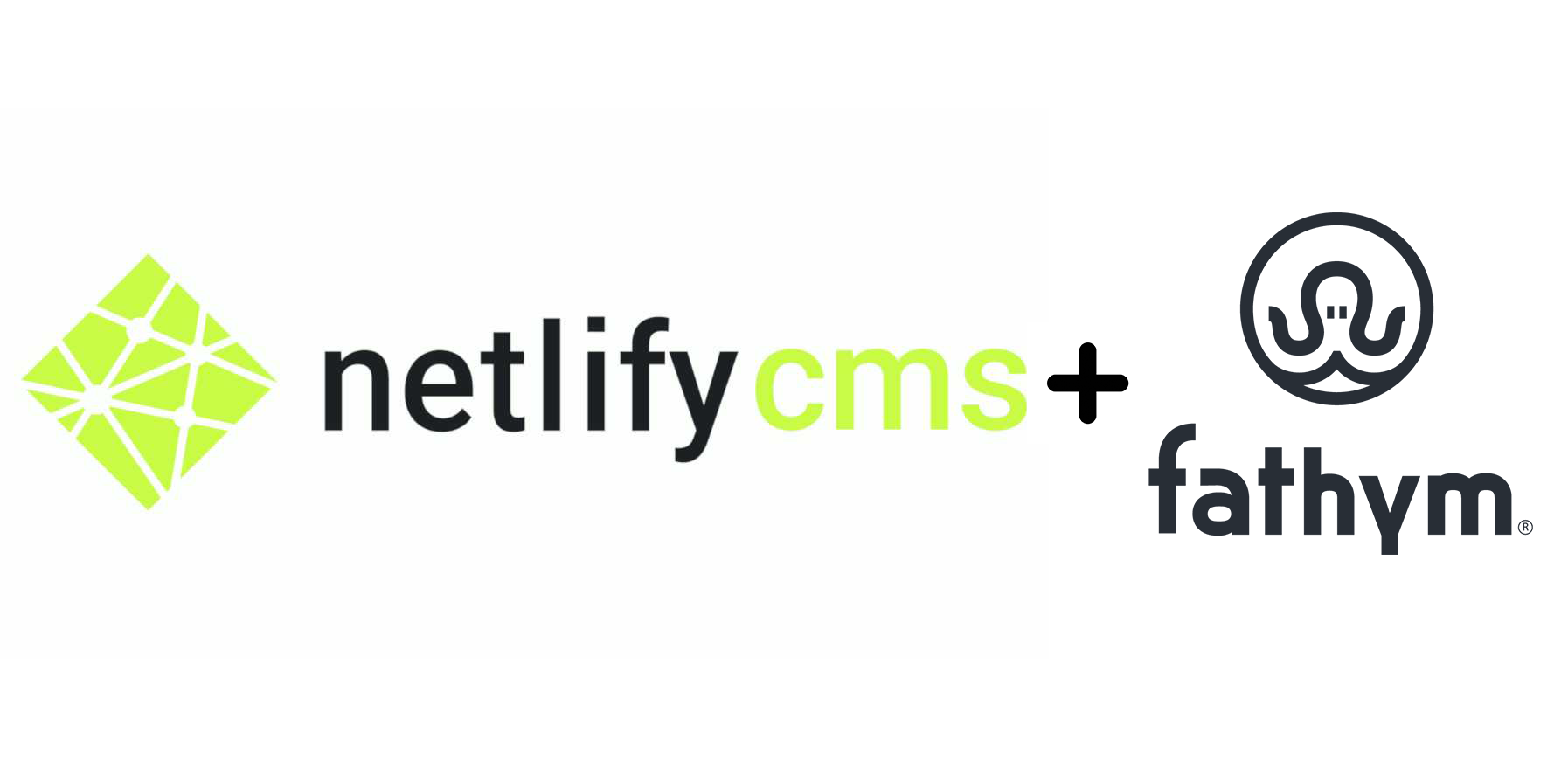How to use Netlify CMS and host with Fathym
July 7, 2022 by Rich Kurtzman, Brand Communications @ Fathym

Building a website from scratch can seem like a daunting task.
Especially if you’re not a web developer.
One solution is to turn to a seasoned professional, but that costs money and can take a long time. That's why many turn to building it themselves.
Luckily, in 2022, doing that is incredibly easy.
CMS definition
What you need is a CMS, or Content Management System. A CMS is the structure on the backend of a blog. It’s the place to add content, including text, pictures and videos.
You can edit, or even collaborate on that content, allowing multiple users to add to your media libraries. This is extremely valuable for businesses and teams who have multiple contributors of content. For instance, a small business looking to sell things may have a product creator, a blogger and a photographer. Each of them can add their own content through the CMS.
And finally, a CMS stores all of that content, too. Go ahead and dump tons of photos in and use them when necessary, later.
Some popular choices are WordPress – and we’ve written extensively on how to create headless WordPress sites – as well as Squarespace and Drupal. WordPress and Drupal are free but both require paid plugins and have limited design choices while Squarespace means using their hosting platform which is expensive and their hosting locks you in.
So, today we’ll look at Netlify CMS, which is free to use.
Netlify CMS
They set out to clarify that not all Netlify sites use Netlify CMS, and not all sites using Netlify CMS are hosted on Netlify.com, either.
“The folks at Netlify created Netlify CMS to fill a gap in the static site generation pipeline. There were some great proprietary headless CMS options, but no real contenders that were open source and extensible—that could turn into a community-built ecosystem like WordPress or Drupal. For that reason, Netlify CMS is made to be community-driven, and has never been locked to the Netlify platform (despite the name).”
So, Netlify is looking to follow in the footsteps of WordPress and Drupal in terms of things being free, open-source and community-driven, which is great. And with any hope, things will turn out even better than before.
What’s great about Netlify CMS is they have templates to work with multiple different static site generators on the front end. Per their website, you can use: Gatsby, 11ty, Hugo or a JavaScript framework like Next.JS and more. The only downside is you need to host to Netlify to use those templates.
If hosting elsewhere, there is documentation to walk you through how to get a site up and running using those aforementioned site generators.
And before you can get the site up and into the public sphere, you have to find a host.
Host on Fathym
Bring the site to Fathym and let us host.
Fathym uses serverless hosting by leveraging Microsoft Azure as our cloud platform.
One huge plus is there’s no need for management by the user, we handle that for you.
Also, serverless means scalability on demand. If there’s a traffic spike because you created and shared something magical, it will respond automatically and scale up. In traditional server-based architectures, huge traffic spikes can overwhelm servers and crash a site.
Speaking of scaling up and growing as a site: For those needing an “Enterprise” level solution, we have a plan for that, too. In that instance, if your company wants to move off a “shared” plan with Fathym, you can still use all Fathym’s infrastructure but on your own Azure cloud.
Serverless means quicker deployments, updates and upgrades too because there is no origin server. Those same benefits are true when talking about micro or modular frontends, so the two complement one another.
Conclusion
To quickly recap: Use Netlify CMS on the back end as a place to input all your content, store it and format it.
Then, use a static site generator like Gatsby or 11ty, or even a JavaScript framework – if you have coding experience – like Next.js for your frontend. There, you’ll find templates, styling ideas and options for the look and feel of the website.
Finally, host your new site on Fathym using Microsoft Azure.
Join Fathym today to host your website, build your own with our micro frontends platform, and/or to utilize everything IoT Ensemble has to offer.